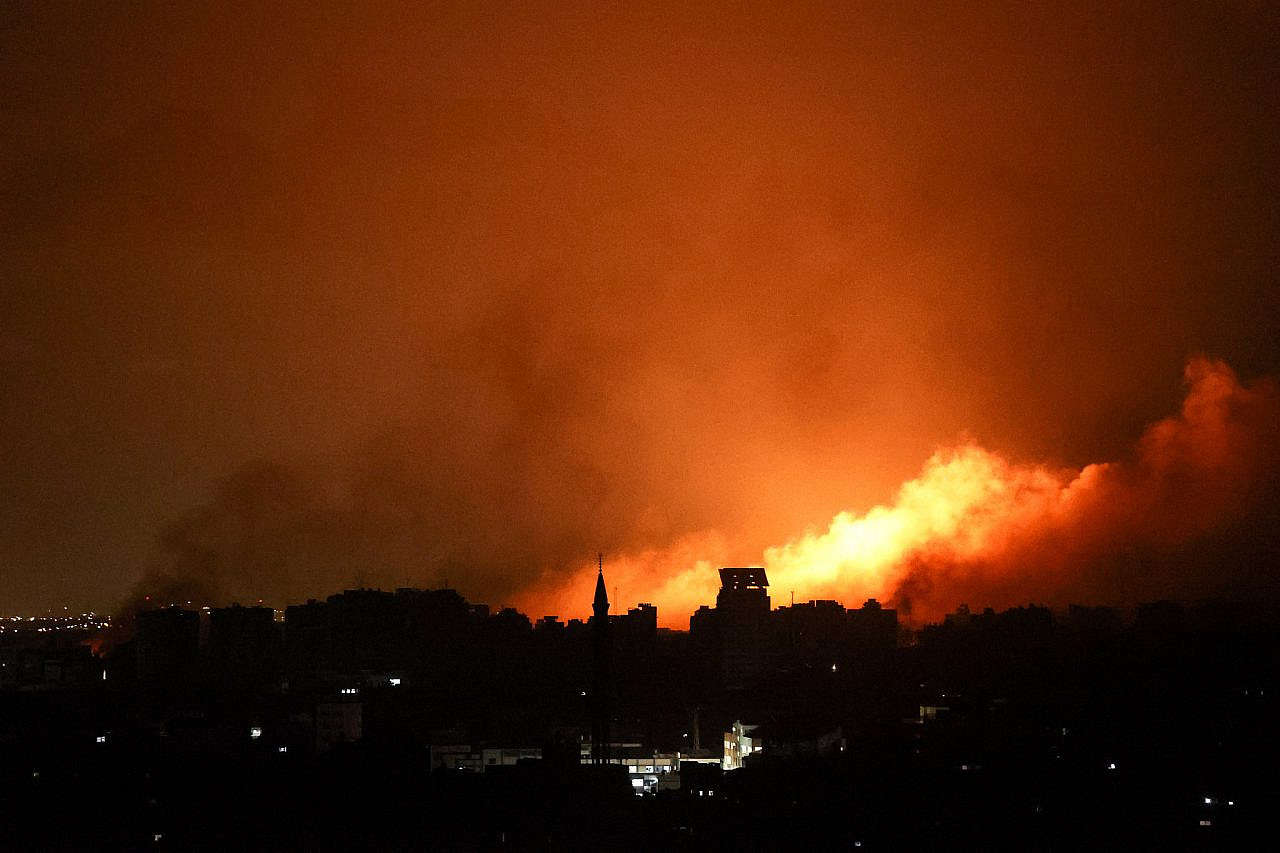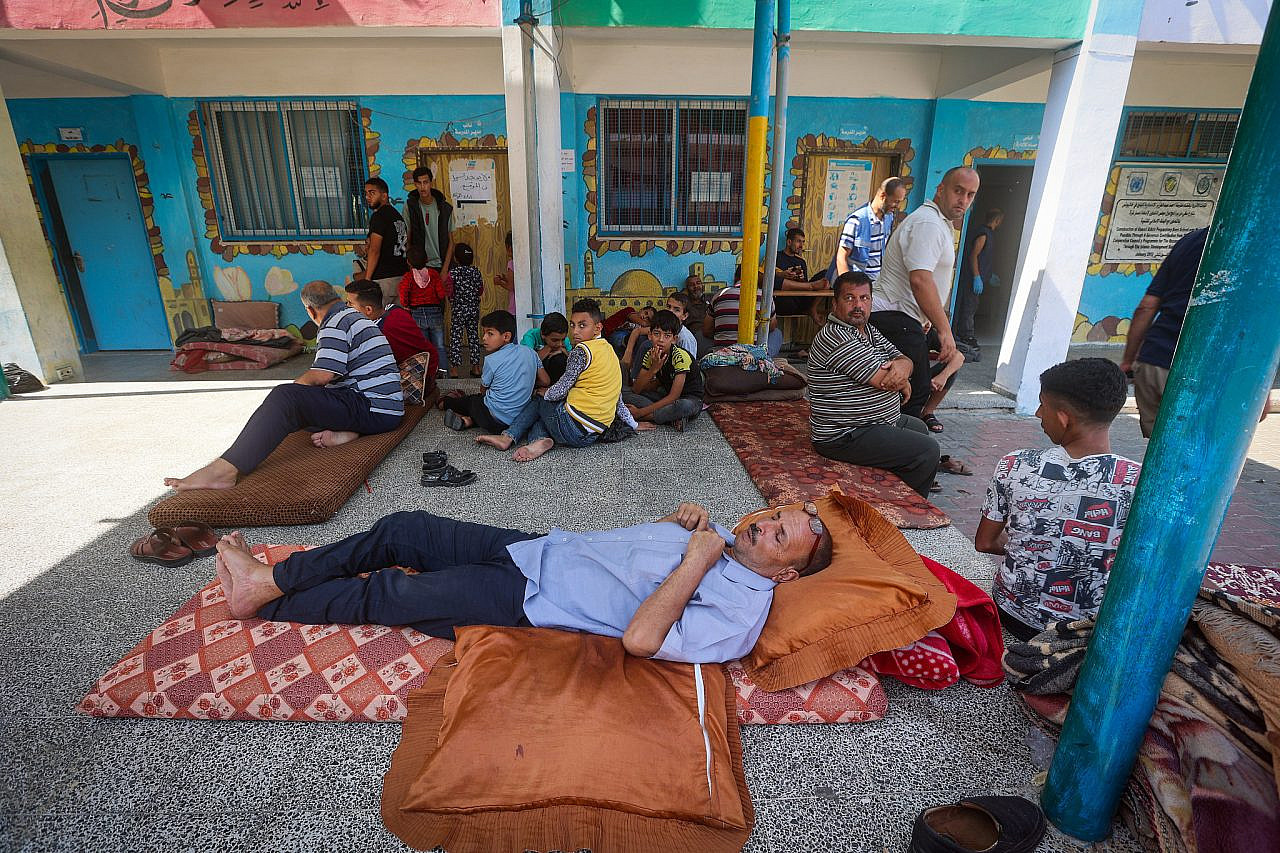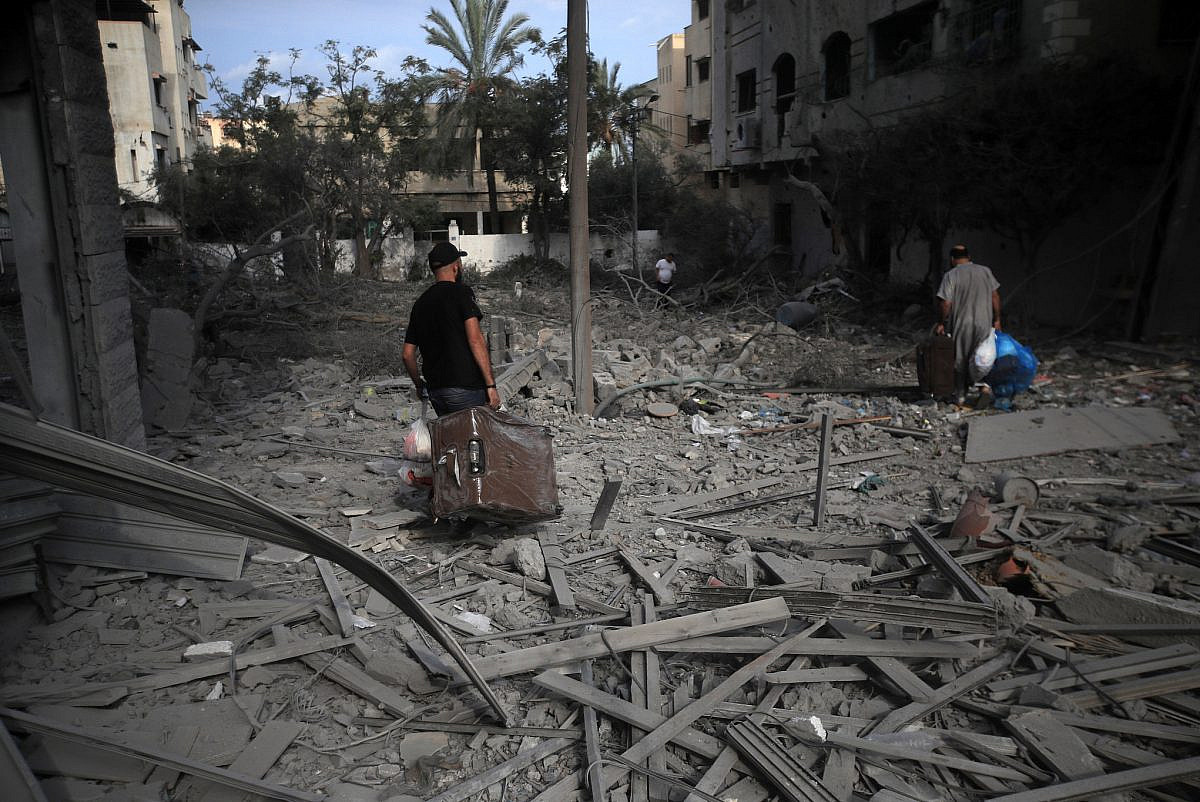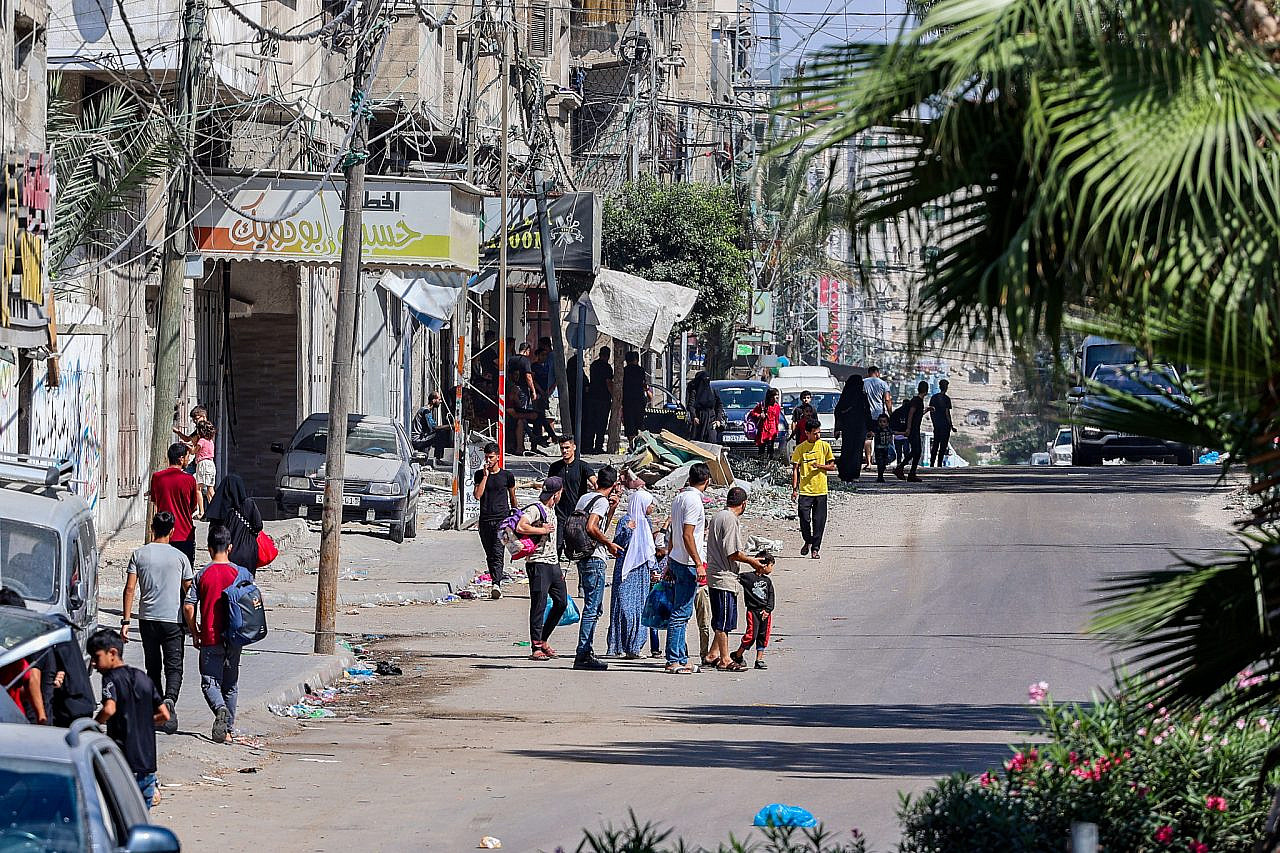Tens of thousands of Gazans from the northern parts of the strip have been fleeing southward since Friday morning in a state of panic, fear, and anger, after Israel ordered everyone in the north to evacuate within 24 hours. The attempted displacement of more than a million people feels like another Nakba, and it is the same scene that many of the elderly in Gaza witnessed during the 1948 war.
Social media platforms — to the extent that Gazans are able to access them, after Israel shut off electricity and prevented any fuel supplies that could power generators from entering the strip — were flooded with calls for people living in southern parts of Gaza to prepare their homes to welcome the refugees. Given how strongly connected we are across the territory, many people are seeking refuge in the homes of family members and close friends. But as the refugees search for places to shelter, they all know that there is no safe place in Gaza.
The fear and anxiety were evident in the convoy of displaced people heading down Salah al-Din Street, which connects the Gaza Strip from north to south. Children were crying, and their mothers were praying intensely for this nightmare to end.
The faces of the new refugees tell the whole story. They all left their homes to come to the unknown. No one can speak, no one is able to express feelings or emotions. Only their eyes speak of the amount of anger and resentment at what the Israeli occupation is doing to them, and to Gaza.
Even before Israel’s evacuation order early Friday, the number of Gazans displaced since Israel began bombarding the strip on Saturday — in the wake of Hamas’ surprise assault on southern Israel — was over 400,000. An Israeli military spokesperson emphasized again this morning that the army is set to begin “significant military operations” in the north of the strip, telling Gazans: “Now is the time to leave.”

Yet while Israel orders residents to flee their homes in the north, it continues bombing the south and even the so-called “safe routes” for traveling there. The death toll from Israel’s unrelenting assault on the strip since Saturday stands at 2,329 as of Sunday morning, and the military’s ground invasion appears imminent.
Most international institutions with offices in Gaza City — including UNRWA, and international media organizations like the Associated Press — have evacuated their employees to facilities in the south, fearing for their safety. At the same time, however, many residents have remained in Gaza City and other northern parts of the strip in defiance of Israel’s orders.
‘If we’re going to die, we’ll die here’
Social media posts from people refusing to leave their homes are going viral. For many Gazans, who are refugees from the 1948 Nakba, leaving their homes and cities again is totally unthinkable. They say this is a psychological war, in which the occupation wants to intimidate them into leaving their homes and then kill them en masse.
Some are physically unable to leave because they are sick or wounded; others are unwilling because they know there is no safe place for them in the south; while others still fear the difficult journey given the limited means of transportation and the fact that Israel’s bombing is ongoing.
Samar Siyam, whose family fled to stay with friends in Khan Younis, struggled to find transportation to head south. “We contacted the taxi offices to request three cars to take us there, but we did not find any cars after many attempts,” she said.
“We went out there with the neighbors; many people came out of their homes while the bombing was going on, looking for cars,” Siyam continued. “Everyone was wondering what would happen. [It was] a terrifying scene that our children will never forget. I do not know what image Israel wants to convey to the children of Gaza. Our children will not forget what they went through because of the injustice and cruelty of this occupier.”
Kamal Obeid fled his home in the Shuja’iya neighborhood, east Gaza City, on the first day of Israel’s onslaught, seeking refuge with his family in an UNRWA school in Tal el-Hawa, in the west of the city. “I was forced to evacuate after Israeli airstrikes hit our neighborhood,” said the 32-year-old father of five. “Now, people in the school are talking about evacuating Gaza City, but I don’t know where to go.”

Despite the dangers, Obeid is insisting on remaining in Gaza City. “I will not evacuate twice,” he said. “We lost everything we had. Our homes were destroyed. There is no safe place to live in Gaza — Israel will kill us everywhere. If we’re going to die, we’ll die here. There is no dying worse than the situation we are living in, with no water, food, or electricity.”
Ahmed Masoud, 22, took the decision to relocate for the second time since Saturday. “We are now evacuating to the south,” he said. “We don’t know where we are going, but we have to go — even if we will stay in the street.”
Most read on +972
Masoud was originally living in the neighborhood of Al-Rimal in western Gaza City, but evacuated after Israeli air strikes destroyed all the towers in the neighborhood. “We escaped from Al-Rimal to Al-Zeitoun [southern Gaza City] to save our lives, and we are evacuating again in order to try and save our children and women,” he said. “We know that there is no safe neighborhood in Gaza, but we are trying.”
Umm Abed, an elderly woman, was among the thousands making the journey south along Salah al-Din Street by foot, along with her sons, daughters, and grandsons. “We are living in a state of panic and fear, we don’t know what is going on.” she said. “This is a genocide, this is a terrorist occupation. Where should these people go? We really don’t know where we are going, but our souls and lives matter.”





